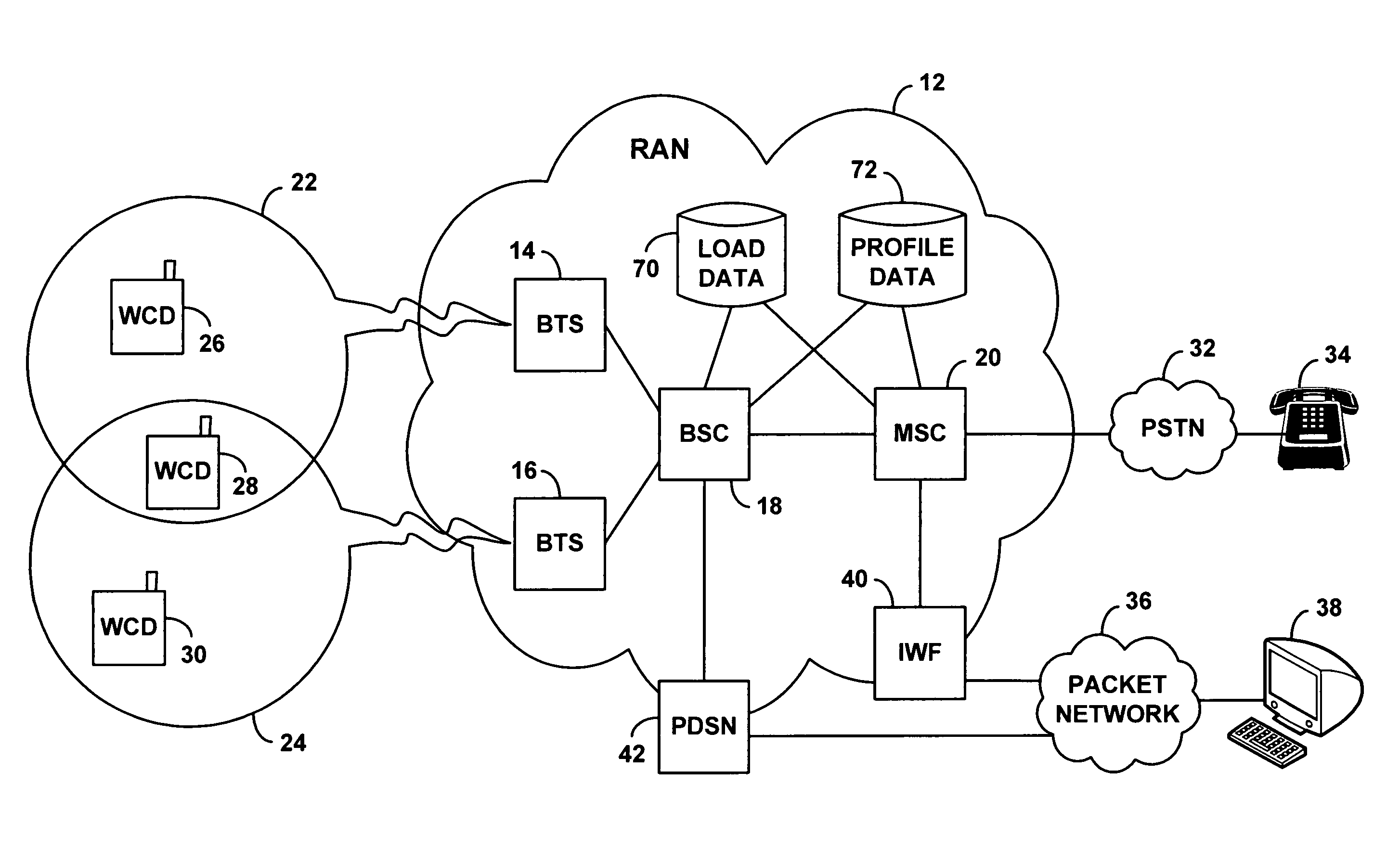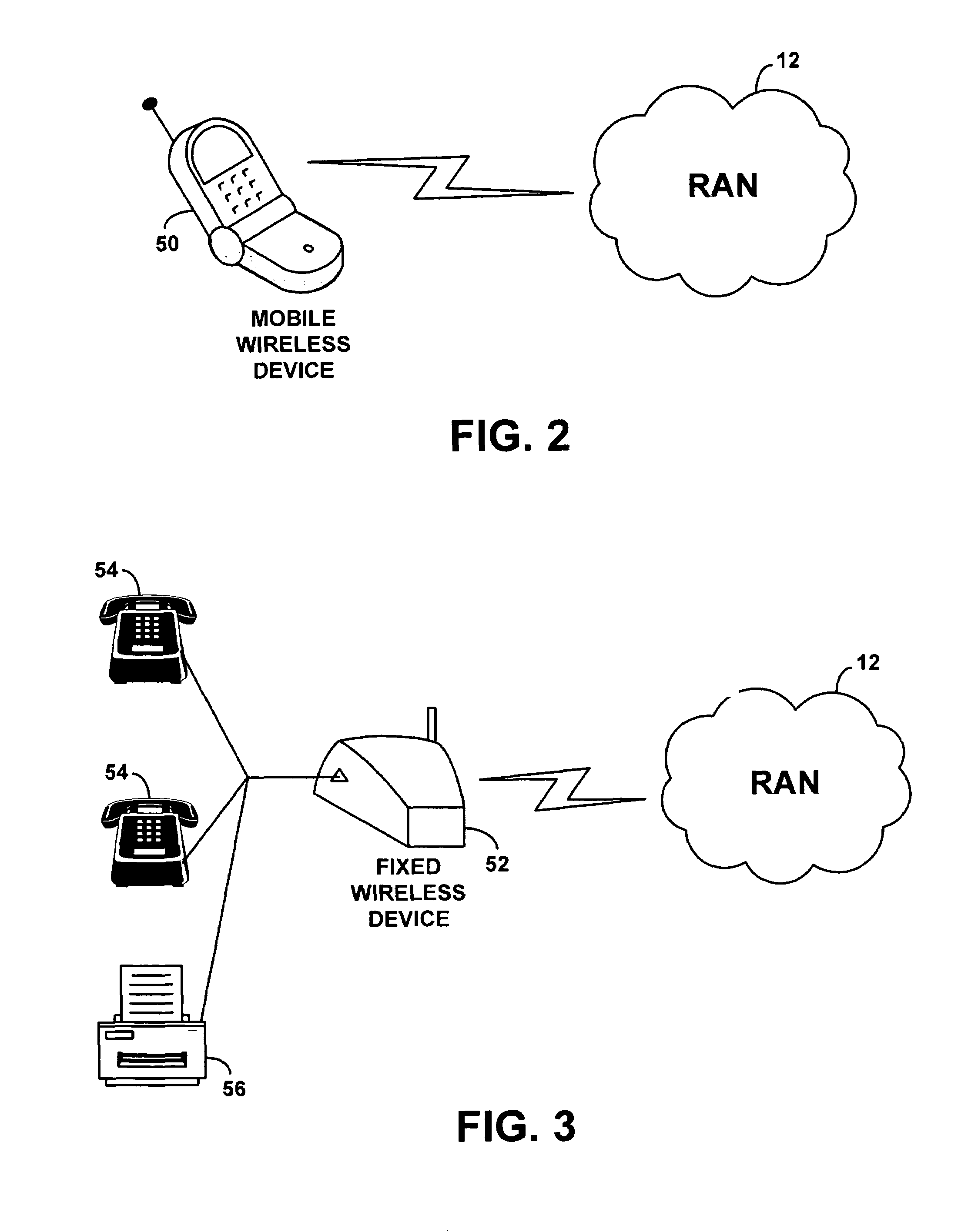Method and system for wireless admission control based on fixed or mobile nature of wireless communication devices
a wireless communication and fixed or mobile nature technology, applied in the field of wireless communication, can solve the problems of increasing interference, unable to support further calls, and limited capacity of each wireless coverage area of a cellular wireless communication system, so as to reduce interference, reduce call quality, and limit capacity
- Summary
- Abstract
- Description
- Claims
- Application Information
AI Technical Summary
Benefits of technology
Problems solved by technology
Method used
Image
Examples
Embodiment Construction
[0038]Referring to the drawings, FIG. 1 is a block diagram of an example cellular wireless communication system arranged to carry out an embodiment of the invention. As shown, the example system includes at its core a radio access network (RAN) 12 comprising two base transceiver stations (BTSs) 14, 16, one base station controller (BSC) 18, and one mobile switching center (MSC) 20. As noted above, these RAN entities are functional in nature and can be integrated and distributed in various ways. Further, a RAN could alternatively include more or fewer of the entities shown or could include other entities or take some other form altogether.
[0039]Conventionally, each BTS may comprise an antenna tower (not shown) that radiates to define one or more wireless coverage areas in which wireless communication devices (WCDs) can operate. By way of example, FIG. 1 shows BTS 14 radiating to define a first wireless coverage area 22, and BTS 16 radiating to define a second wireless coverage area 24...
PUM
 Login to View More
Login to View More Abstract
Description
Claims
Application Information
 Login to View More
Login to View More - R&D
- Intellectual Property
- Life Sciences
- Materials
- Tech Scout
- Unparalleled Data Quality
- Higher Quality Content
- 60% Fewer Hallucinations
Browse by: Latest US Patents, China's latest patents, Technical Efficacy Thesaurus, Application Domain, Technology Topic, Popular Technical Reports.
© 2025 PatSnap. All rights reserved.Legal|Privacy policy|Modern Slavery Act Transparency Statement|Sitemap|About US| Contact US: help@patsnap.com



